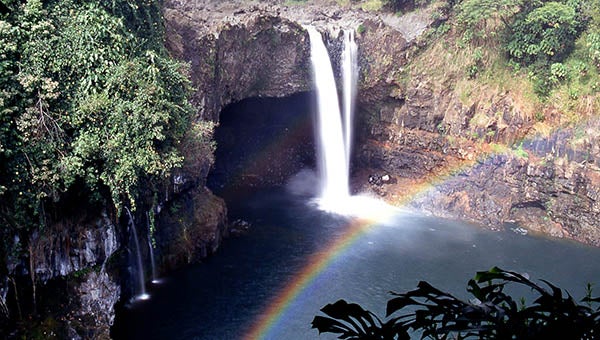Dragon dancers, rainbows and orchids
Published 10:31 am Saturday, April 16, 2016
by James D. Howell
There are things to see on the big island of Hawaii other than volcanoes. I’m off to see a few today, before I have to leave and get back to my job.
Hilo is not a large city, just below 50,000 people currently. I drive the mile or so from my hotel and park in the not crowded lot at the end of Haili Street, just across the road from Hilo Bay. I look out at the peaceful water today and try, unsuccessfully, to imagine what this small city experienced in 1960 — not that long ago.
An earthquake occurred off South America’s west coast and about 15 hours later, the tsunami (tidal wave) entered the harbor at Hilo Bay. The bay is open to the east and the coastal landmass acted like a funnel for the subsurface terror. Waves as high as 35 feet washed into the mouth of the Wailuku River. The destruction covered all of downtown and most of the area along the river for about 3/4 mile inland.
My car would be under 10 feet of water, if this were the day of the tsunami. Evidence of the damage is not visible, but there are enough markers and monuments to adequately describe the event.
That’s past; today, there’s a Chinese New Year parade scheduled. It’s a family-friendly, everybody participates, sort of thing, and I see many small children along the parade route waiting for excitement.
The dragons arrive with much fanfare, firecrackers and oriental music. It’s colorful, delightful and full of movement. The dragons stop and children are encouraged to get under the body and help move it along. With a certain hesitancy, some do.
The dragons depart and I investigate downtown. There’s a farmer’s market under canopy a couple of blocks down. I’m greeted by a large variety of locally produced fruits, vegetables and flowers. Flowers here, as with other places I’ve visited, are grown for the sheer joy of beauty and fragrance. Many vendors show and sell to an active crowd. Much of the language is a mixture and I enjoy the sounds without understanding the words.
I leave downtown and head up the river. The travel guide describes Rainbow Falls as easily accessed. I know that rainbows are not always present, but I’m hopeful that it will be worthy of pictures today. Rainfall has much to do with the flow over the falls, and it has been dry for several days. It’s also a little late in the day; the rainbows are a morning event, I’m told.
I stop in the deserted designated parking lot and check out the falls via a short walk to an observation deck. It is very beautiful: twin rivulets flow together over a tall bank into a quiet pool about 80 feet below. A couple of people are visible on the rocks at the crest and there’s a somewhat scary trail to the bottom off to my right. My brochures tell me that the best views are from the trails. I believe it. Then, in spite of my pessimism, there it is, as if by magic. A rainbow. Even a second arc barely visible. I set my camera and take the shot, hurrying and hoping.
I record the peaceful beauty of the falls and river, retrieve my car and head north on the coastal road. Orchids beckon.
I take the newer Mamalahoa Highway (State route 19) to just south of Papaikou. From there the old road is a must for ocean views and coastal scenery.
I arrive, park the car and pay my donation/admission. The gardens are the result of Mr. Dan J. Lutkenhouse’s labors of love. He purchased the initial property in 1977 and proceeded to turn it into the only botanical garden in the world that borders an ocean. The present Onomea Valley is striking for its lava rock trails, water ponds, Onomea Falls and varieties of orchids and other tropical plants from around the world.
According to the brochure, no tractors were used in the construction in order to not compact the soil. Trails through dense jungle growth, steps in the lava beds and whatever work was necessary was all done by hand, by Mr. Lutenhouse and his assistants. It was a gargantuan achievement. The gardens opened for membership subscriptions and the public in 1984. In 1995, the gardens were donated to the Hawaii Tropical Botanical Garden organization.
I hike the trail to Onomea Bay; the views can only be described as spectacular. I backtrack to the orchid gardens and spend the rest of my available time with hundreds of varieties of the well-known flower.
I fold the tripod for the last time on the Big Island and head for the hotel. It’ll be back to work tomorrow.
JAMES D. “ARCHIE” HOWELL is a Southampton County native and 1955 graduate of Franklin High School. He can be reached at archiepix@kingwoodcable.com.
- Birds of Paradise and other local flowers in the market
- One of hundreds of orchid varieties in the gardens
- Mom checks her child in the mouth of the dragon
- Dragons stop for visiting in the new year’s parade
- Ginger and local vegetables in the market
- Delicate orchid petals in the gardens
- Chinese dragon in the new year’s parade













